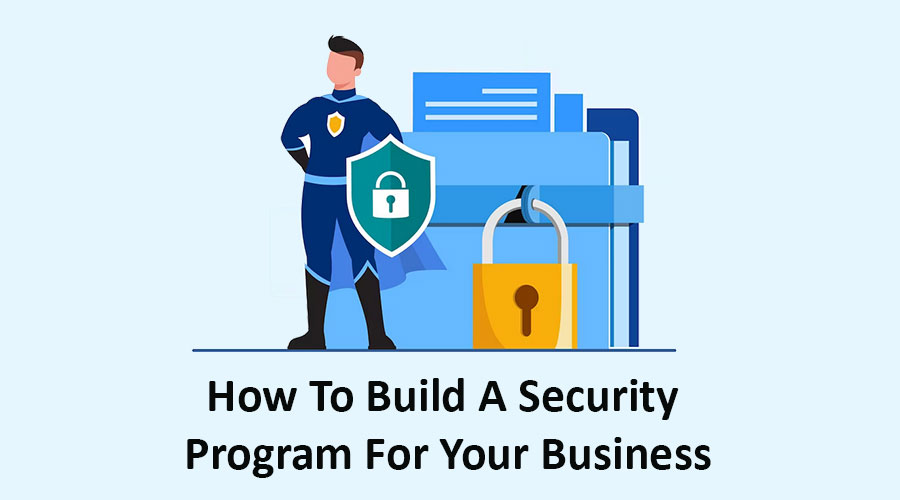
Every business needs to know that its infrastructure is secure. This goes for small businesses just as much as big ones. For small businesses in particular, owners might not be aware of just how catastrophic a cyber security failure can be, and the damage it can do to a business.
What is a security program?
Having a cyber security program means several things: having a set of controls, policies, and activities in place to ward off potential attacks against a company’s system.
The primary components of a security program are often referred to as “CIA,” which stands for confidentiality, integrity, and availability. It is these three categories that should be fulfilled in making sure that a company’s systems are truly secure.
Although it is generally the “C suite” level of employees of a given company that are responsible for overseeing the implementation of a security program, it is the IT team that monitors its day-to-day functions.
Cybercrime risk is real: It was reported that the cost of criminal activity against companies’ IT systems was over $10 billion in 2022, $4 billion more than the year before. At this rate, who knows how high the damage from these crimes will continue to rise in the near future?
And not only can a business’ own system be attacked. Attacks have sometimes affected the systems of clients and other related people. You don’t want this happening to your business.
Cyber security experts suggest replacing the traditional ROI (return on investment) growth model with a ROSI (return on securities investment) model, which calculates the savings of cyber security crimes avoided into a company’s budgeting.
How should you go about creating a program?
There are several steps that you can take to successfully implement a security program:
- Evaluate your level of risk in advance. This means looking at each component of your systems individually and determining the level of risk that each of them carries.
- Determine your framework and overall strategy. The results of your risk analysis will determine which framework you will choose. Some of the more popular ones include the following:
- ISO-27001 / ISO-27002
- NIST Cybersecurity Framework (CSF)
- Center for Internet Security Critical Security Controls (CIS-CSC)
Some frameworks are industry-specific or tailored to government agencies, so you might prefer one that is more in line with your particular industry standards. And, of course, for companies operating in different countries, there might be different standards altogether. It would pay to do research on these considerations before you get started.
Your company strategy will be a roadmap of sorts that you and your staff plan out over the course of several years. It will include the following components:
- Designating staff members to oversee development and policy implementation
- Testing and monitoring roles
- Evaluations
- Develop a risk management plan to ensure that resources are being allocated in the appropriate directions, and that they remain consistent with potentially changing factors.
- Ensure that endpoint installation products are in place. This ensures that the medium through which your data is transmitted is secure. It involves the installation of endpoint detection and response (EDS) systems.
- Choose the right tools to project your data and your overall network. This includes the implementation of a vulnerability management framework, including the installation of software patches that enable updates to be applied as they become relevant to your software.
Your data loss prevention (DLP) is one of several different approaches you might choose to protect your data itself.
You also want to have a backup solution in place in the event that your primary framework has a problem. Backup solutions can apply to your endpoints, your servers, individual databases, apps, etc.
- Have a data recovery plan in place. In case something should happen to your data, you want your team to be prepared to recover from it as quickly as possible so that the damage done is minimal and you are able to recover as much as you can of what was lost.
- Install multi-factor authentication (MFA). MFAs are additional steps that systems require for people to enter systems. They involve the use of things such as one-time passcode (OTP) sent to people’s designated devices, or other additional measures beyond simply entering passwords to enter systems.
- Perform network penetration tests and application penetration tests to make sure your security measures are correctly installed. You never know when something might have been set up incorrectly, or there could be a glitch in your system and the whole network can suddenly become vulnerable to attack. Test every aspect of your network to make sure that everything is fully in place and protected.
Don’t let your system become vulnerable
Staying on top of your network’s security can seem like a tedious task, and one that keeps you away from your other work. But it can be the most important thing that you do for your company. You don’t want yours to end up becoming part of a larger statistic of companies that have fallen victim to cyber attacks. Take the necessary steps to protect yourself now, and you can focus on being productive in your business with confidence.




